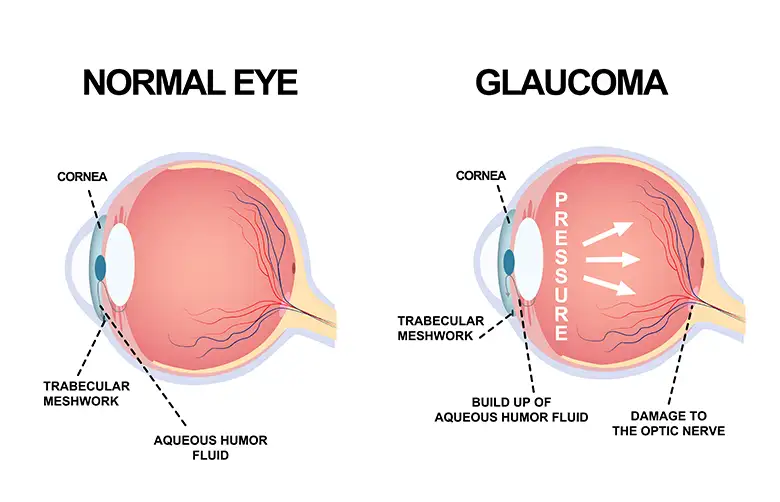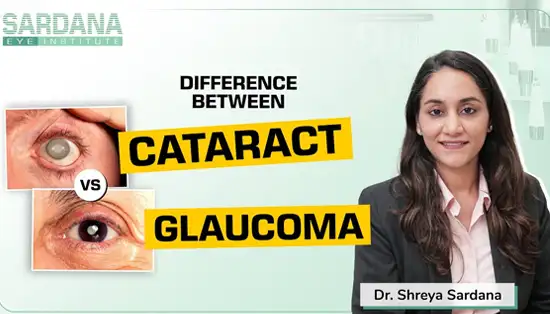Clinicians refer to a patient as Glaucoma Suspect when they are showing signs of early Glaucoma but they are not yet sure. These signs can be a raised intraocular pressure but normal looking optic disc or it could be a patient with normal IOP but a suspicious looking optic disc. These individuals usually need to be monitored at regular intervals and no treatment is required till the time they are labelled as a Glaucoma suspect.
1.PRIMARY GLAUCOMAS
Primary open Angle Glaucoma is the most common type of Glaucoma in our population. In these cases the Optic Nerve is damaged usually due to a raised IOP. Most patients have no symptoms in the early stages as there is no pain and vision seems normal.
Normal Tension or Low Tension Glaucoma. In these individuals the IOP is normal but inspite of this they have damaged Optic Nerve. Evidence has shown that lowering of eye pressure further using eye drops or laser has stopped progression of Glaucoma in these patients.
Chronic Angle Closure Glaucoma. This is caused due to inherited narrowed down drainage pathways within the eye. This angle is located between the Iris and Trabecular meshwork. They can be helped by medicines and laser Treatment. Common amongst Asian and Chinese population.
Acute Angle Closure Glaucoma. This variant is a medical emergency which occurs due to obstruction of drainage pathway by the Iris. Patient presents with severe pain, redness, decreased vision , nausea and vomiting. Immediate treatment is warranted to prevent permanent damage.
Childhood Glaucoma. This is a rare form of Glaucoma caused due to abnormal drainage pathways. It can exist at birth or develop later. Parents may notice that the child has enlarged eyes, sensitive to light and has excessive watering.
2. SECONDARY GLAUCOMA
Glaucoma that develop due to other associated conditions of the eyes such as trauma, infection s, inflammations etc.
Various types are:
- Traumatic Glaucoma
- Steriod induced Glaucoma
- Pseudoexfoliation Glaucoma
- Pigmentary Glaucoma
- Uveitis Glaucoma
- Neovascular Glaucoma
- Iridocorneal Endothelial Syndrome




